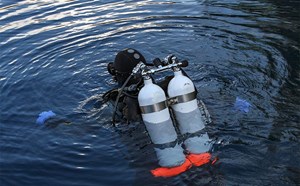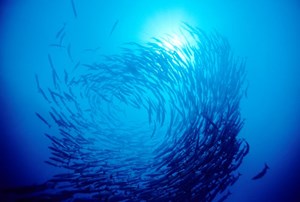
Hyperbaric Medicine Fellowship: My First Week
Hyperbaric medicine has been an aspiration of mine for some time now. Early on in my career as an Air Force flight surgeon, I was exposed to hyperbaric medicine and grew to love the unique and groundbreaking aspects of this field. Once I made the decision to retire from active duty, I started my search for a hyperbaric medicine fellowship program to begin my new chapter in life. I was fortunate to be accepted to the Hennepin County Medical Center fellowship, where I hit the ground running.
Less than one week after relinquishing my final command on active duty in Tucson, Arizona, I moved to Minnesota and started orientation at my new program. I had no real idea what I would be experiencing in a fellowship, and right away I was given an amazing overview into the world of hyperbaric medicine.
Monday
I attended basic orientation sessions as pertained to benefits and procedures of the hospital. I was also given an overview of the electronic medical record system.
Tuesday
I was in the hyperbaric department starting my hands-on training. The first day was spent learning the policies, logistics, and procedures of patient care within that department, as well as attempting to see patients and document their care. The next day was when things really took off…
Wednesday
A patient presented with carbon monoxide (CO) poisoning and found to have concerning ECG findings as well as an elevated troponin. We recommended treatment in the chamber following the Weaver protocol. However, during treatment, the troponins continued to rise. Cardiology initially deemed the ECG and lab abnormalities as demand ischemia stemming from the CO exposure, but after some persuasion, they took the patient for cardiac catheterization that revealed a large occlusion in the left anterior descending artery. Had the patient not had their exposure to CO and been evaluated by our team, they very well may have had a lethal cardiac event in the near future.
Thursday
A patient was referred to us for possible limb ischemia. This individual had a history of sarcoidosis and chronic kidney disease and had noticed that some toes were turning “dusky”. The patient went to their primary physician, who diagnosed cellulitis and prescribed antibiotics. As the symptoms did not respond to treatment, the patient went to an emergency department (ED) and ultimately was transferred to our institution for further evaluation. Given the severe discoloration of the toes, there was concern for ischemia. In our department, LUNA and TcPO2 studies revealed findings more consistent with inflammation than ischemia. During our interview, the patient reported a recent bee sting on the affected leg. After some correlation, it was felt that the symptoms were likely an atypical presentation of Wells’ syndrome (eosinophilic cellulitis) or a vasculitis. After angiography confirmed lack of vascular occlusion, the patient was treated with steroids, and the symptoms quickly resolved.
Friday
A large family was transferred to our facility for CO exposure. Each family member had a different level of exposure and varying extent of symptoms. After ED evaluation and consultation with the hyperbaric medicine department, the decision was made to offer HBO treatment to three members of the family. All did well with their prescribed treatment regimen, and this case was valuable in demonstrating that not all who have CO exposure need HBO treatment, even amongst those in the same household.
Saturday & Sunday
Early Saturday morning, a patient was transferred to our facility with severe necrotizing fasciitis and septic shock. A CT scan confirmed the diagnosis of Fournier’s gangrene, and the patient was taken to the operating room for drainage and debridement. Hyperbarics was consulted, and the patient was treated in the chamber several times over the course of the weekend, and the patient’s condition stabilized. That same weekend, a patient presented to the ED with retinal artery occlusion. Given that we had routine HBO patients being treated, as well as the Fournier’s gangrene patient, we needed to be creative with chamber management, so as not to over utilize the staff available on call. To conserve resources, the decision was made to treat the retinal artery occlusion case in our monoplace chamber. The patient was noted to regain vision after several treatments, going from 20/400 to 20/25, and had subsequently an uneventful hospital course.
Entering a fellowship at this stage in my career was a difficult decision to make. One alternate path would have been to pursue hands-on training and not obtain board certification. However, after the encounters that I had in just my first week, it is safe to say that I made the right choice. The variety of experiences with routine and emergent cases has proven to be absolutely invaluable. Additionally, the opportunities for research, as well as my improved understanding of medical leadership, will only assist in my future. I look forward to continuing my fellowship training, as I am certain that it will provide me with valuable experiences and allow me to become an exceptional hyperbaric medicine physician.
Christopher Bird, MD



